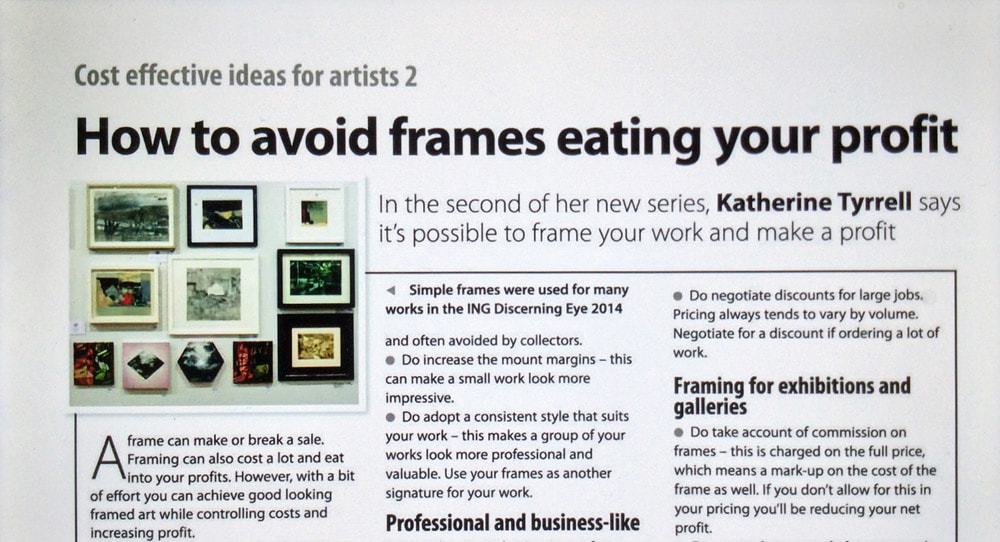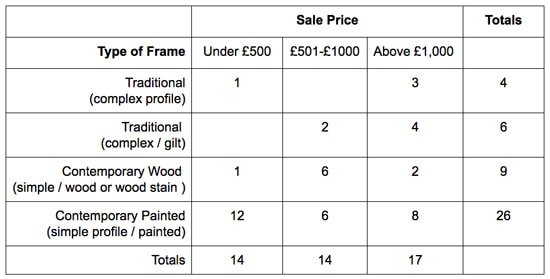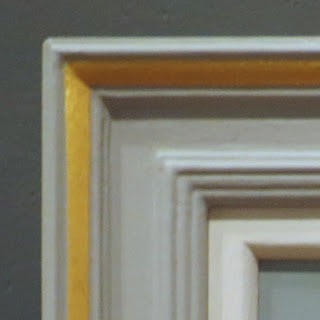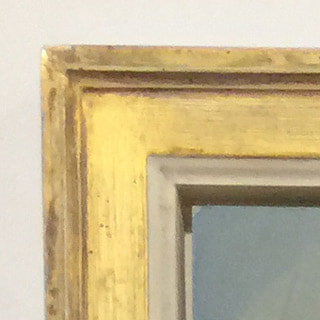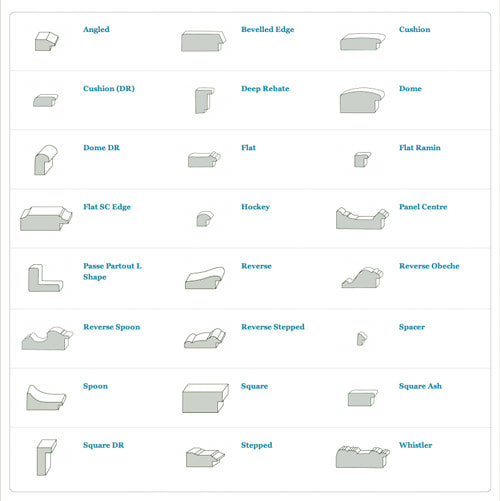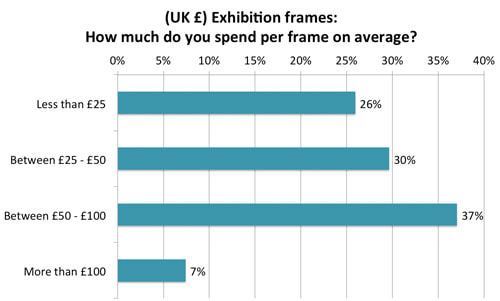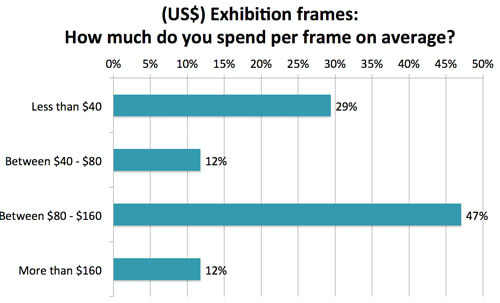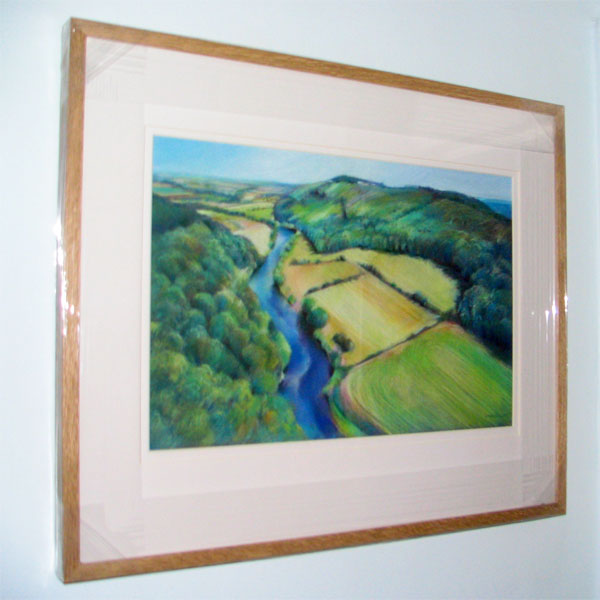- Home
- NEWS
-
PRACTICE
-
MARKETING
- How to write an Artist's Statement >
- How to write an Artist's Resume or CV >
- How to sign a painting, drawing or fine art print
- Business Cards for Artists
- How to write a press release for an artist
- The Private View Invitation
- Publicity for Juried Exhibitions
- Websites for Artists >
- Image & Video sizes for Social Media Sites
- How to be mobile-friendly
-
SELL ART
- FRAME ART
-
SHIP ART
-
COPYRIGHT
-
MONEY & TAX
- About + Help
- BANKING
How you mat and frame your art has a major impact on how it looks
- and whether it gets into exhibitions and sells
How you hang a picture determines whether it looks good - and stays on the wall!
- and whether it gets into exhibitions and sells
How you hang a picture determines whether it looks good - and stays on the wall!
|
This section covers:
ON THIS PAGE
ON SEPARATE PAGES
|
COMING SOON (NEW PAGES) (when I've got a minute to finish them off!) You will find brief comments and links to more information on most of these topics in some of the sub-sections below
|
ALL ABOUT FRAMES
a good painting deserves a frame, a bad painting needs one! |
How to frame art
|
A frame has four main purposes. It serves to:
In addition a frame says something about its owner. If the frame looks good and flatters the artwork, then the owner feels good. Framing can help you sell art for higher prices - but only if it's a good quality frame which matches the quality of the art |
Frames and framing are not cheap as any artist who has ever employed a framer to put a decent frame on a painting will know.
When framing for yourself anything goes - you can do what you like. When framing to sell you need to make sure that the frame matches the price category it is selling in - without eliminating your profit! REFERENCE:
|
The market in images has no room for frames. Magazines, newspapers, exhibition catalogues and art books act as if they don't exist, cropping them out of reproductions even when the painters saw them as integral parts of their work. |
People who want the best won’t consider you the best unless your subtle clues are the clues that indicate quality, which includes the quality of your work, the frame quality, and even the back of the painting — which won’t impact the initial sale of the work but will impact the buyer’s perceptions once the painting is in their hands ready to hang. |
When you are framing for other audiences - open exhibitions, galleries and commissions - there's a different set of considerations.
- How you frame depends on who you are framing for
- How you frame dictates the kit you need to hang a frame or artwork
- PLUS you need to avoid pitfalls in framing and hanging art
- PLUS tips and techniques which can help you save money and increase profit.
REFERENCE:
- Do frames help to sell art? (2015) - an analysis of how sold paintings related to type of frames (see above)
- How to mat and frame your artwork - Back in 2008 I wrote down all the things I needed to remember in relation to matting and framing artwork - and then published it in one blog post!
- How to avoid frames eating your profit - Highlighting my article about options for keeping control of your framing costs in the March edition of The Artist Magazine
- Do frames help to sell art? A review of frames used for paintings in the ROI annual exhibition and an analysis which categorises sold paintings at the annual exhibition of the ROI into: type of frame and range of sale price
- Choosing The Right Frame For Your Artwork | ArtTutor - choosing the right sort of frame can be a nightmare. This post offers a few tips
- Picture Framing Tips: What’s the Right Hardware for Your Frame?- Artists Network - looks at what you need to know about screws. D-rings, steel plates, picture wire and hazardous hardware (e.g. sawtooth hangers)
- Framing - some useful points and hints | Alix Baker - includes images
- How to apply a dust cover to your frame | Framing Tips - Artists Network - A dust cover is the sheet that is taped or glued to the back of a completed frame to prevent dust, dirt and debris from getting into the package.
This section is a work in progress - the contents below demonstrate what the section will cover.
GENERAL TIPS ABOUT FRAMERS
|
A good framer is a bit like gold dust - and should be highly valued.
A bad framer can ruin all the effort you have employed to create your art! |
I RECOMMEND you:
|
Lists of Framers
|
My List of Recommended Framers in the UK page - on a separate dedicated page on this site - provides details of Framers RECOMMENDED by artists, as follows:
|
OTHER LISTS OF FRAMERS:
|
|
FACEBOOK PAGES ABOUT FRAMERS
You can find professional framers who have Facebook Pages on Facebook. Most are sensible and indicate their location so this shows up in the listing I recommend you do NOT deal with anybody who is operating off an FB account rather than a proper Facebook Page. They don't get how FB works and do not understand the difference between personal and professional/commercial, |
FACEBOOK GROUPS OF FRAMERS
There are lots of PRIVATE Facebook Groups for framers. I'm bemused as to how they think the average artists can find out about them.
|
Help another artist
Help another artist by nominating a framer you recommend on your website or blog
- for inclusion in a list of recommended framers in different parts of the world.
You need to:
- for inclusion in a list of recommended framers in different parts of the world.
You need to:
- use the form at the bottom of List of Recommended Picture Framers
- state your name and your email address (ie recommendations cannot be anonymous and can only come from artists)
- state the name of the Framer, where they are located
- Identify the online site (i.e. URL of your website or your blog post or social media site) where you talk about the framer and why you recommend this framer.
General Tips about Framing
|
How can a frame help sell your art? If you aim is to sell your art, you need to understand what type of frames might help sell your artwork - and which might act as a deterrent!
Different styles of frames go in and out of fashion. Particular styles of frames are favoured more in some locations and less in others. Unusual frames - Never be afraid to try an unusual frame if it adds value to the finished piece. It might get you noticed - and you might get selected for a prestigious exhibition as a result - as Leslie Watts was (see image below) |
Framing is culturally oriented. Frames which the American market seems to think are absolutely splendid can be regarded as totally OTT in London where the totally neutral frames with very little gilt in plain view is the dominant type of frame seen in galleries.
How framing can help your bank balance. I'm currently all in favour of the painted and distressed frame, due to the fact I'm perfectly capable of doing that for myself after I've bought a basic frame. This approach also helps to cut down on the costs of framing which can be very significant if you are framing a lot of pictures. |
REFERENCE:
- The reasons why frames for art change over time - The purpose of a picture frame and why frames for paintings change over time due to changes in technology, approaches to conservation, ownership and fashion.
- Do frames help to sell art? - Analysis of the type of frames on sold oil paintings - across price ranges - in the exhibition of a prestigious art society
|
John Jones has a number of helpful webpages about:
|
Below you can access videos which show you many of the tips you'll find in this section. More will be added as this section is developed further.
Plus I've also started to highlight conservation products
|
What sort of frame?
|
Exhibition frames in London
The frames I typically see in exhibitions in London fall into four categories:
|
REFERENCE
All types of frames can be 'finished' with a suitable conservation wax polish. See Product Review - Renaissance micro-crystalline wax polish.
|
Framing Design Trends
Throughout most of the modern (that is, post medieval) era, original frames were discarded whenever a painting changed ownership, and a new frame more suitable to the work of art's new surroundings was provided.
Metropolitan Museum of Art | Heilbrunn Timeline of Art History
|
The trends in framing in recent years in the UK have been:
PLUS good quality mats which help focus on the artwork |
Frames change for four reasons:
REFERENCE
|
What sort of moulding?
|
This chart indicates all the different sorts of mouldings which are available for a picture frame.
A framer is often the best person to advise on which type of moulding will work best with a particular painting. The choice of moulding can be dictated by:
REFERENCE:
|
courtesy of FW Holroyd Framing Supplies Ltd - a leading UK supplier
|
What sort of wood for the frame?
|
There are a number of concerns when choosing wood for a frame
|
Types of wood typically are characterised as either Hardwood or Softwood
Hardwoods are "angiosperms" - these are trees that have seeds which have an outer casing. Deciduous trees (which lose their leaves) are very often hardwoods. Hardwoods grow more slowly. The types of wood used for picture frames include species such as Cherry, Walnut, Ash and Birch. Softwoods typically come "gymnosperm" trees e.g. conifers where the seeds do not have an outer casing and fall to the ground. Softwoods grow faster and are 'softer' and easier to work with. Most evergreen trees are softwoods, including Fir, Cedar, Pine and Spruce. REFERENCE:
|
The Backing Board
|
The Backing Board is the surface behind the painting which is visible from the rear.
|
Backing boards are usually:
REFERENCE:
|
What sort of tape to seal the back?
The purpose of finishing the back of a frame is to:
- Seal it to prevent dust, mites and damp from entering the mount/artwork/under the glass
- Make it appear professional and neat to the eye
- Provide hanging points to hang the picture
- Provide stability from motion and wall protection
Picture Framing : How to finish the back of a picture frame
|
If you don't seal the back of your frame, you'll find that lots of dust mites and tiny insects will make their way in - and they do love to eat the paint!
There are various ways you can seal the back of your framed artwork. The only one that works long term and is suitable for conservation is gummed paper tape which you wet and seal when you make the final seal at the back of the frame Gummed paper tape
REFERENCE:
|
48mm x 50M Framer's Kraft Paper Tape
(Not available in USA - this is an alternative)
BUY Self Adhesive Picture Frame Backing Tape Rolls Kraft Brown 2'' Wide x 55 Yd from Amazon.com |
|
|
|
Framing for art competitions & open exhibitions
Make sure you can get your work framed correctly.
Book your framer well in advance. Do not assume that they can turn around your frames in the time you've allowed. Remember that framers do have holidays! I'll never forget the August that I couldn't find a framer who could do my framing in time for exhibition deadlines!
20 tips for entering art competitions
|
It's critical when framing for art competitions and open art exhibitions that:
|
It's absolutely essential that you frame without using frames which will get your artwork eliminated e.g.
|
Framing for gallery exhibitions
The important aspects of framing for solo or groups exhibitions are:
- using your frames as another signature for your work - enabling people to identify easily more works by you
- creating a coherent and impressive exhibition
- containing the expense
- ease of use re. hanging kit
|
I've looked previously at how much people spend on exhibition frames - see the charts from How much do you spend on exhibition frames on average? (Poll results) below.
|
The charts below relate to the different results from artists based in the UK and USA (based on prices in 2011).
|
|
The thing is - not everybody who likes a painting likes the frame.
This means you're much more likely to sell a painting if the purchaser doesn't have to factor in the cost of replacing the frame. |
when I was starting to choose frames for exhibitions, one of my framers told me that he does an awful lot of reframing work for people who have bought art but don't like the frame. That taught me a lot about making frames as neutral as possible to be as least offensive to the maximum number of people. It also made me think very hard about spending a lot of money on a frame which might not sell the picture at the end of the day! |
REFERENCE:
- Do frames help to sell art? (2015) - this tells you what happened when I went to an annual art exhibition of a prominent art society - and started to count what sort of frame the SOLD artwork had....
Protecting your frames
|
Artwork for exhibitions gets handled a lot and is also frequently stacked - by galleries, art competitions and art societies.
It's in your interests to make sure that:
A tip from my framer about Protecting your frames - cling filming the edges protects them from dirty paw prints! Brian always cling films the framed picture so that the frame edges are covered when they are stacked. This provides good protection and helps to prevents marks being made on the frame during the stacking process. It also means I can avoid using cardboard corner protectors which (a) add to the space required and (b) results in exhibitors normally asking for them to be removed prior to stacking if space is limited! more tips coming soon
|
One of the penalties of frames going back and to exhibitions is that they can get damaged either in transport or while in storage at a gallery - or even your own home.
The product below is used by a well known art collector I know to keep gold frames from looking tired due to mishaps, scrapes and damage to the surface of the goldleaf frames.
The product below is used by a well known art collector I know to keep gold frames from looking tired due to mishaps, scrapes and damage to the surface of the goldleaf frames.
|
RUST-OLEUM SS9093 Metallic Leafing Pen-Gold, 10ml
Rust-Oleum Metallic Leafing Pens add a premium metallic finish to most surfaces including wood, metal, paperboard, glass, unglazed ceramic and some plastics.. Durable formula applies with special chisel tip for broad or narrow lines. Rust-Oleum SS9093 Paint Pen - Gold by Rustoleum
RUST-OLEUM SS9093 Metallic Leafing Pen-Gold, 10ml
|
Framing for commissions
|
There are two main choices for framing commissions. Each has variations.
- either the frame is determined by the artist and is counted as part of the cost of the commission
- or the client chooses and pays for the frame separately after the artwork has been delivered and the final payment made to the artist.
more tips coming soon
How to store finished artwork
|
Finished artwork needs clean, dry and secure storage which doesn't warp the frame or cause the artwork to deteriorate or disappear!
One professional artist I spoke to recently was going to use his major cash prize to build a secure shed in his garden to store all his paintings which were swamping his home! Basic recommendations from the Smithsonian Museum Conservation Institute on storing art work of all kinds: Art Materials
Start by making sure your art materials are stored properly.
|
Completed artwork
Museums tend to use art storage racks - however these are probably not feasible within a domestic or studio context. Here are some thoughts about what you need to think about when storing artwork
These are some practical solutions suitable for studios
Artwork for a solo exhibition tends to cause a problem in terms of needing to find new places to store your art. One option is to hire a temporary storage module. more tips coming soon
|
ABOUT ART BUSINESS INFO. FOR ARTISTS
This website aims to provide a compendium of resources about the art business for artists. Please read "PLEASE NOTE"
It helps artists learn how to do better at being business-like, marketing and selling their art and looking after their financial security.
This website aims to provide a compendium of resources about the art business for artists. Please read "PLEASE NOTE"
It helps artists learn how to do better at being business-like, marketing and selling their art and looking after their financial security.
|
Copyright: 2015-2021 Katherine Tyrrell | Making A Mark Publications
- all rights reserved If you've got any suggestions for what you'd like to see on this website please send me your suggestion
|
PLEASE NOTE:
1) Content and the law change all the time. It's impossible to keep up with it if you're not working on the topic full time. 2) I research topics carefully. However, I am totally unable to warrant that ANY and/or ALL information is
|
3) Hence all information I provide comes without any LIABILITY whatsoever to you for any choices you make.
4) This website is FREE FOR YOU but not for me. Links to books are Amazon Affiliate links. Buying a book via this website means I get a very small payment which helps to fund and maintain this website. .I much appreciate any support your provide. Adverts are provided by Google AdSense - but the adverts do not mean I endorse the advertiser. |
- Home
- NEWS
-
PRACTICE
-
MARKETING
- How to write an Artist's Statement >
- How to write an Artist's Resume or CV >
- How to sign a painting, drawing or fine art print
- Business Cards for Artists
- How to write a press release for an artist
- The Private View Invitation
- Publicity for Juried Exhibitions
- Websites for Artists >
- Image & Video sizes for Social Media Sites
- How to be mobile-friendly
-
SELL ART
- FRAME ART
-
SHIP ART
-
COPYRIGHT
-
MONEY & TAX
- About + Help
- BANKING

